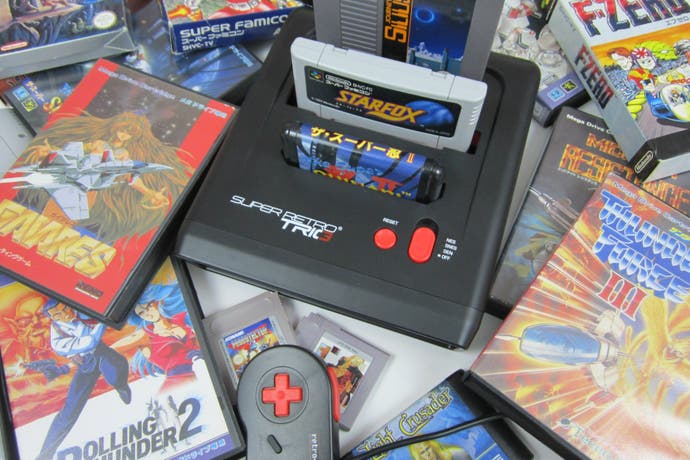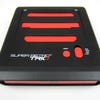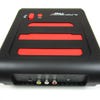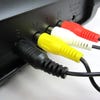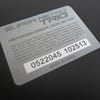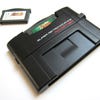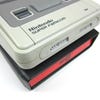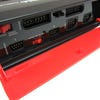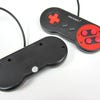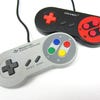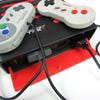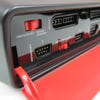Retro-Bit Super Retro Trio review
A NES, SNES and Mega Drive all-in-one console? Digital Foundry looks for the catch.
The relentless march of time may bring with it incredible advances in gaming technology, but there's a cost too: with each passing year, the number of working vintage consoles slowly but surely diminishes. Some fail simply due to age, others due to the fact that they've been serving their owners dutifully for much longer than was ever anticipated when they were first manufactured. While it's true that "they don't make them like they used to" (you're unlikely to see many launch Xbox 360 consoles match the Atari 2600 by lasting three decades and still functioning), there's a definite lifespan to these classic systems, and indeed all consumer tech. Sooner or later, they're likely to stop working.
Chances are, if you're a keen retro enthusiast, you may already have experienced a death in your (hardware) family - which is one of the reasons why the market for clone systems continues to grow each year. As patents expire and technology progresses, it's becoming easier for third-party manufacturers to legally replicate the performance of past systems in cheap-and-cheerful machines. Companies like Hyperkin - which is preparing to launch its all-in-one Retron 5 system this year - are filling the void left by Nintendo and Sega. Unsurprisingly, neither company is interested in offering replacements for hardware that is now over two decades old, and that's where the clones come in.
Challenging Hyperkin in the 2014 "Clone Wars" is fellow industry stalwart Retro-Bit, which has produced numerous clone systems over the past few years, including the RetroDuo and RetroDuo Portable. Keen to capitalise on the renewed interest in clone hardware triggered by the announcement of the Retron 5 - which runs NES, Famicom, SNES, Mega Drive and Game Boy Advance titles - last year, Retro-Bit lifted the lid on its own all-in-one system: the Super Retro Trio. As the title suggests, this device plays three different old-school formats: NES, SNES and Genesis (to give Sega's 16-bit system its North American moniker - the rest of the world refers to it as the Mega Drive). In actual fact, the name is slightly misleading, as Retro-Bit's machine is also capable of playing Game Boy Advance and Game Boy games via additional peripherals - which we'll get on to shortly.
At a cost of $69.99 - that's just over £40 - this console is hardly going to break the bank, and it's worth keeping that low price in mind when you rip open the packaging and delve inside. The Super Retro Trio is sturdy enough, but it's a long way from being a premium product. It feels light, and the cheap plastic used in its construction does little to instill confidence. When removing games from the cartridge slots, there's a definite degree of flex to the top part of the casing but even so, it never feels like it's going to fall apart at any point and the myriad controller ports on the front - a pair for each of the replicated formats - are solid enough.
"Clone consoles like this are perfectly legal, and allow you to play your treasured cart collections on freshly manufactured, new hardware."
The front of the Super Retro Trio has a flap which, when pressed, drops open to reveal a dazzling array of connections and switches. There are two SNES and NES ports, allowing you to use original pads with the machine. You'll also find two 9-pin connections, which not only allow you to connect Mega Drive controllers, but also serve as the ports used by Retro-Bit's own pads, two of which are bundled with the machine. Based on the SNES controller, these pads are actually a lot better than we could have hoped for; the buttons are slightly clicky and the body doesn't feel as robust, but the d-pad is excellent. If you don't have any original SNES pads to hand, fear not - the supplied alternatives are more than acceptable, and as an added bonus they allow you to play six-button Mega Drive titles like Super Street Fighter 2 and Ranger-X too.
Next to the controller ports, you'll find two switches. One allows you to toggle controller arrangements between the three supported systems, while the other controls the region for Mega Drive titles. Many of Sega's later 16-bit games came with territory lock-out measures to prevent players from one region play games from another; titles we tested included a PAL edition of Treasure's unique action RPG Light Crusader and a Japanese version of Konami's Vampire Killer - known in Europe as Castlevania: The New Generation. Both ran flawlessly, provided the correct region setting was selected. SNES games don't require the region switch - Japanese Super Famicom titles and western SNES releases all load first time, without any toggling.
On the top, you'll find a trio of cartridge slots, one for each system. The tall NES cartridges tend to wobble when in place, while the squatter Mega Drive games take quite a bit of effort to insert and remove due to the tightness of the contacts inside, which presumably give over time. Using the Super Game Boy - a peripheral for the SNES that allows Game Boy titles to be played on the television - you can expand the console's capabilities still further. But that's not all: the Super Retro Advance Adapter, also produced by Retro-Bit but sold separately, adds Game Boy Advance software to the equation, too.
"In addition to NES, SNES and Mega Drive support, optional adaptors are available in order to allow Game Boy and Game Boy Advance titles to run on the Super Retro Trio."
This adapter is also works with the original SNES console, but when used with the Super Retro Trio it doesn't require the fiddly and unsightly AV cable which comes bundled with it - the video signal is safely passed through Retro-Bit's innards, which is something that simply isn't possible with an original SNES. The sole caveat here is that you can't play Game Boy Advance games through S-Video - they have to be played using the composite AV connection of the Super Retro Trio. Titles are displayed in a 4:3 aspect ratio, as opposed to the slightly wider view of the original portable. Sadly, Game Boy and Game Boy Color games cannot be played using this peripheral - something that was possible on every hardware iteration of the Game Boy Advance, save for the Game Boy Micro.
Around the back, there are composite AV connections and an S-Video port. While these are noticeably inferior to modern hook-up options - such as HDMI and component - it's fair to say that they constitute a slight improvement over the connections offered by the original systems. While Sega's Mega Drive was capable of outputting a sharp and colourful RGB SCART signal, this type of connection was exclusive to Europe at the time, which means the Super Retro Trio - a console aimed at the North American market - offers a sharper, more vibrant picture than most US gamers will have been accustomed to back in the late '80s and early '90s. Sure, the composite video signal suffers from colour bleed, but if you were to run this side-by-side with the original systems using the same connection, there would be no notable difference. If you happen to game using a CRT television, you're even less likely to complain.
The Super Retro Trio comes with a North American two-pin power supply, but thankfully the power socket connection on the console itself is standard and you're almost certain to have a spare UK-standard 5v switching AC/DC adapter lying around the house that you can use as a substitute. Failing that, you can use a good old travel shaver adapter to connect the system - the days of having to resort to bulky step-down transformers when using NTSC consoles are thankfully long gone.
"Original console controllers are supported, but the SNES-like pads bundled with the Super Retro Trio are actually pretty decent."
One of the key issues with clone systems is compatibility; because the hardware inside isn't a direct copy of the original, some titles refuse to play or suffer from problems such as corrupted graphics. While we obviously weren't able to test every single SNES, NES and Mega Drive ever produced, we can report that performance was almost faultless. The Super Retro Trio had no issues running the NES and Mega Drive titles we threw at it, and even Star Fox - a SNES title powered by Argonaut's groundbreaking Super FX chip (a typical candidate for compatibility issues) ran without a hitch.
The only game that did present concern was Super Mario Kart, another SNES title aided by additional hardware - in this case, a DSP-1 chip. The game is perfectly playable, but there is slight graphical corruption on certain sprites and the screen flickers randomly every few seconds. This could be something to do with the fact that we were running the PAL edition of the game on hardware intended for the NTSC market, but without a Japanese or American version of the game, we were unable to test to ascertain if this was indeed the case. The bottom line is that you should never expect complete compatibility with any clone hardware, although the Super Retro Trio does seem to fare better than many other imitation systems.
Retro-Bit Super Retro Trio: the Digital Foundry verdict
"While the world waits with bated breath for the Hyperkin Retron 5, the Super Retro Trio offers a no-frills approach to playing your old carts, and the price is right too."
While many retro collectors argue that you should always stick to authentic hardware to ensure the best experience, the fact is that some people don't want several different vintage systems taking up valuable space beneath their television - especially when modern consoles like the PS4 and Xbox One already hog the vast majority of the available room. The Super Retro Trio is therefore a sound investment for its modest price; it grants access to the libraries of three different classic systems (five if you're willing to shell out for the Super Game Boy and Super Retro Advance Adapter) but is roughly the same size as the original SNES.
The variety of systems supported by the console is one advantage it has over other clone consoles and the original hardware from back in the day, and the raft of controller connections on the front - as well as the excellent bundled SNES-like pads - make it even more appealing; if you're after a faithful experience, you can't beat using the original joypads. It would have been nice to have seen some kind of upscaling hardware built into the system alongside HDMI output to make things a little more attractive on HD televisions, but these features would have almost certainly bumped the price beyond the very reasonable $70 the system currently retails for.
The upcoming Hyperkin Retron 5 may offer a more tantalising proposition - it boasts HDMI output, screen filters, save states, a wireless Bluetooth pad, a Game Boy Advance cartridge port as standard and Famicom, Master System and Game Boy Color support - but it's also expected to retail for at least $30 more than the Super Retro Trio, when it's eventually released, that is. Hyperkin was supposed to be shipping the system in time for Christmas 2013, but production troubles have pushed it into this year. The console is believed to be running some form of Google's Android OS, which would suggest that it is running games via emulation - a clever approach, but one that is untested in this form.
There's no guarantee at this moment in time that the Retron 5 is going to be a better system for retro players than the Super Retro Trio, so if you've got $70/£40 burning a hole in your pocket and you want to make use of the mountain of dusty old carts and tangled controllers you have stored under your bed, this is as good a choice as any right now - and the impulse purchase price-point ensures that buyer's remorse isn't going to rear its ugly head any time soon.
Thanks to Innex Inc for supplying the Super Retro Trio and Super Retro Advance Adapter used in this review.
